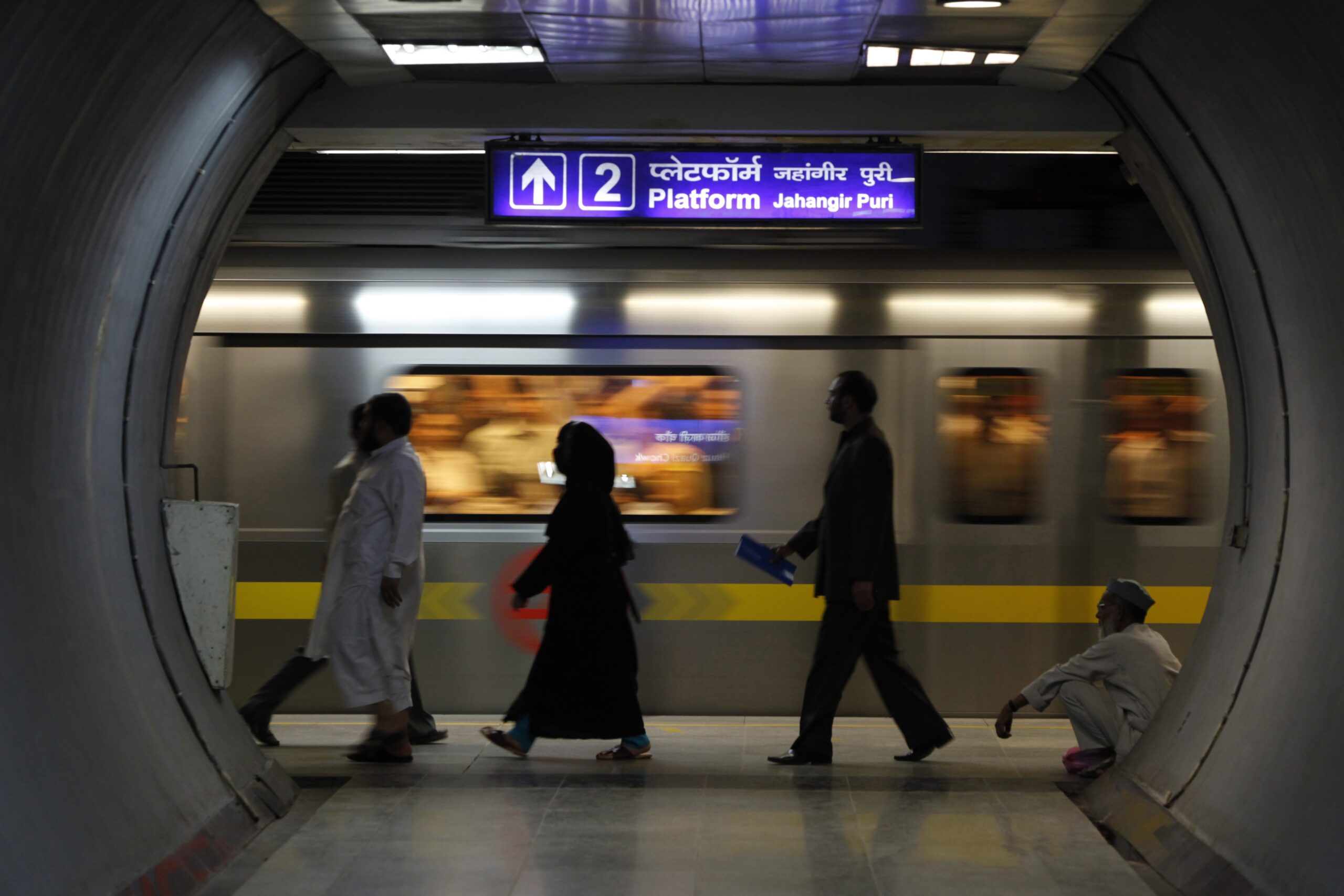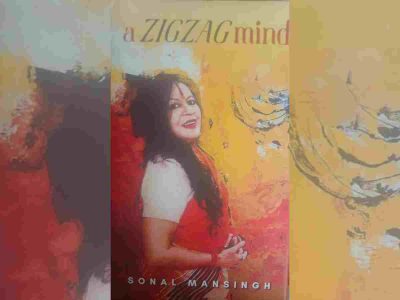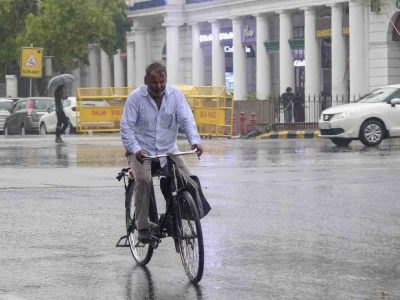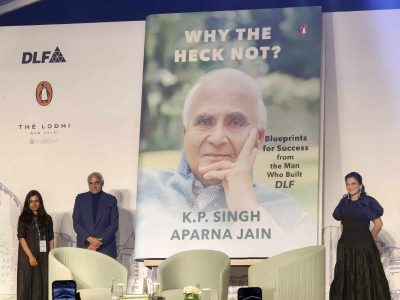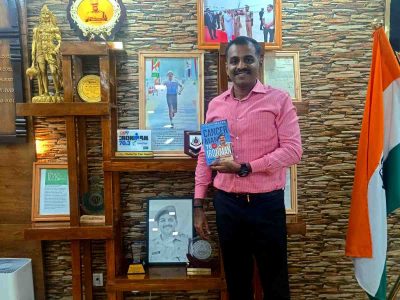On the Yellow Line a woman sits nursing an infant not more than twenty days old. We are not in the ladies’ coach but in a mixed one where, on this morning, the ratio of men to women is about twenty to one. A glass panel with a map of the Metro system is all that separates me from the woman. I can tell she is not poor but also not well off.
She has dark, chipped nail polish on her toes and wears a nondescript sari with a frayed, light sweater. It’s summer, and it’s cold inside the train. She looks like a first-time mother to me, awkward in her feeding technique; she has the baby wrapped in a blanket on her lap. I feel protective toward her but keep quiet and start to make up a story in my head to explain why she is taking the Metro. I look around to make sure no one is looking at her, and yet, I also don’t want to invade her privacy, even as a well-wisher or a would-be protector. There are two men who seem to be with her, but they are stern and silent, and I find this off-putting, maybe even a little distressing. Then my stop comes, and I get off.
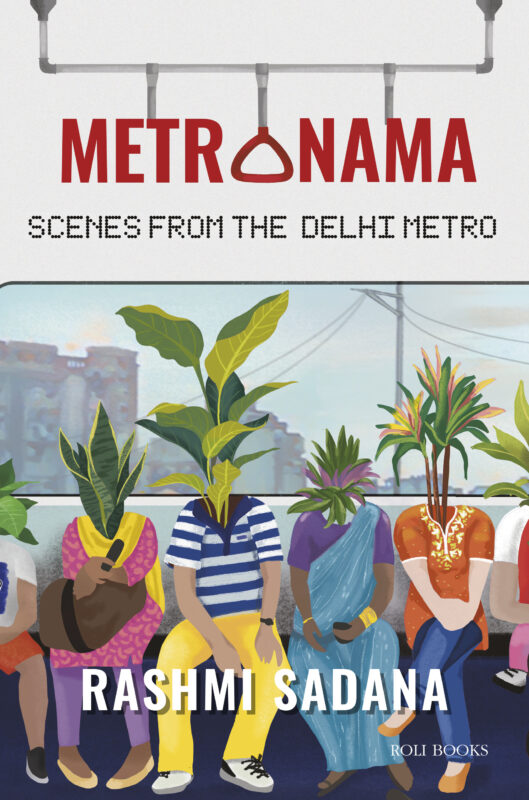
This scenario is described in Rashmi Sadana’s book Metronama – Scenes from a Delhi Metro in the chapter titled ‘Yellow Line’.
Sadana, a cultural anthropologist and an associate professor at George Mason University, Virginia travelled in the Metro for years to capture the life of people using its services. She observed each passenger and their ways of being social with each other.
The idea was to find out how Indians express their modern and global selves. She has also authored The Moving City: Scenes from Delhi Metro and Social Life of Infrastructure. Each chapter talks about the travellers and officials whom she has met throughout her research.
Sadana talks with Patriot about her experiences while writing the book and the urban design and infrastructure of Delhi’s own metro.
“The initial idea was to understand the impact of the Metro on people’s lives but also the impact of the system on the urban landscape. The Metro is not only a new form of transport, it’s also a new set of public spaces, and a concrete edifice spread across the city. So, I was interested in exploring both the social and material aspects of the Metro.
“I talked to as many people as I could and spent as much time as I could just observing what was going on. I rode the trains for years, on all lines, to all stations, again and again. I also followed coverage of the Metro online and in newspapers. But mostly the book is based on my experiences interviewing people and riding the trains”, said Sadana.
Her interactions with people on the Metro were usually brief, but she was able to capture aspects of people’s individuality by remembering or jotting down physical details about them and fragments of their conversation. She wrote copious notes after each Metro interaction, so she had a wealth of material to work with and then tried to bring people to life on the page.
After spending a lot of time crafting and revising each scene, she came to see what the essential stories were that she wanted to include. The book is divided into three parts: Crowded, Expanding and Visible. Each part consists of 25 scenes, combining to a total of 75 vibrant stories from the metro.
The book is designed in such a way that you can read it from any chapter. While talking about the structure of the book Sadana said that, “As I started to write the book, I saw that the ‘scenes’ I was writing were like tableaux, they were snapshots of the city in motion and also like stops on the Metro. Each scene has its own integrity, its own form, and its own message. Once I saw this in what I was writing, I decided to group the scenes together into three parts that roughly correlate to the first three construction phases of the Metro”.
“This book is a consideration of what it means to study the urban environment in the 21st century”, Sadana has included the aspects of infrastructure along with each scene. “We hear a lot about megacities and all the issues in them. In addition to the details of Metro riding, I also wanted people to see how the Metro is a parable for the kind of development that is happening in today’s world. That is to say — how this kind of capitalist mega-infrastructure bulldozes not only the city but also our ideas about the city. So, to do this I interviewed Metro officials, urban planners, architects, bureaucrats, and politicians. They are the deciders and implementers in this kind of top-down infrastructure project”, she added.
In one of the chapters, ‘The Image of the City’, Menon believes that conservation is not and should not be reduced to beauty. “The image of the city is about how it looks but also what it is made of and how people see it. It is an impression that carries weight and creates meaning about a place. The image of the city is about the present but also about the past and the future. Cities are palimpsests – they have layers of meaning and history that get papered over through time – and this gets reflected in urban design and the built environment.

That is why she feels that “Conservation is not just about making things look nice or holding to a certain aesthetic, it’s also about using the right materials for the environment, understanding historical significance, and being aware of the social life that a particular built structure promotes or allows for.”
As mentioned in the book, Delhi Metro has given women a sense of freedom, especially a certain section of women who prefer the ladies’ coach. Sadana shares that the Metro overall has been good for many women in that it gives them a safer and faster way to travel. It has increased the mobility and independence of women who can afford to ride the Metro. Women who choose to ride in the ladies’ coach do appreciate a separate space, but it’s not completely separate since there are no doors between the coaches and the minute you get down onto the platform, it’s a mixed space. But the ladies’ coach does give women a little more breathing room.
The author notes that the arrival of the Metro in the capital has influenced people and given them a sense of freedom and relief from the daily traffic rush to a certain extent. She further said, “The book is really looking at the city through the prism of the Metro from start to finish. And yes, the Metro has given many people a sense of freedom to roam the city in a new way. People often told me how much they appreciated being able to travel distances in a third of the time. And they also appreciate the climate-controlled environment of the Metro. Many told me how much of a relief it is to enter the system when it’s hot outside. I think people appreciate this kind of hyper-modern travel and having access to this kind of speed and efficiency”.
On the other hand, she feels that Delhi faces many environmental problems that the Metro does not solve. For instance, the Metro offers speed to millions, but the number of cars on the road keeps growing. She thinks the city needs even more high-quality public transit options, especially connecting buses to the Metro for a more seamless experience and to address the issue of last mile connectivity by supporting low emissions transport and integration of transport options. Only then will people think of leaving their cars behind – when it becomes easier to go by train.
For more stories that cover the ongoings of Delhi NCR, follow us
Instagram: https://www.instagram.com/thepatriot_in/
Twitter: https://twitter.com/Patriot_Delhi
Facebook: https://www.facebook.com/Thepatriotnewsindia

